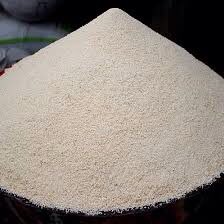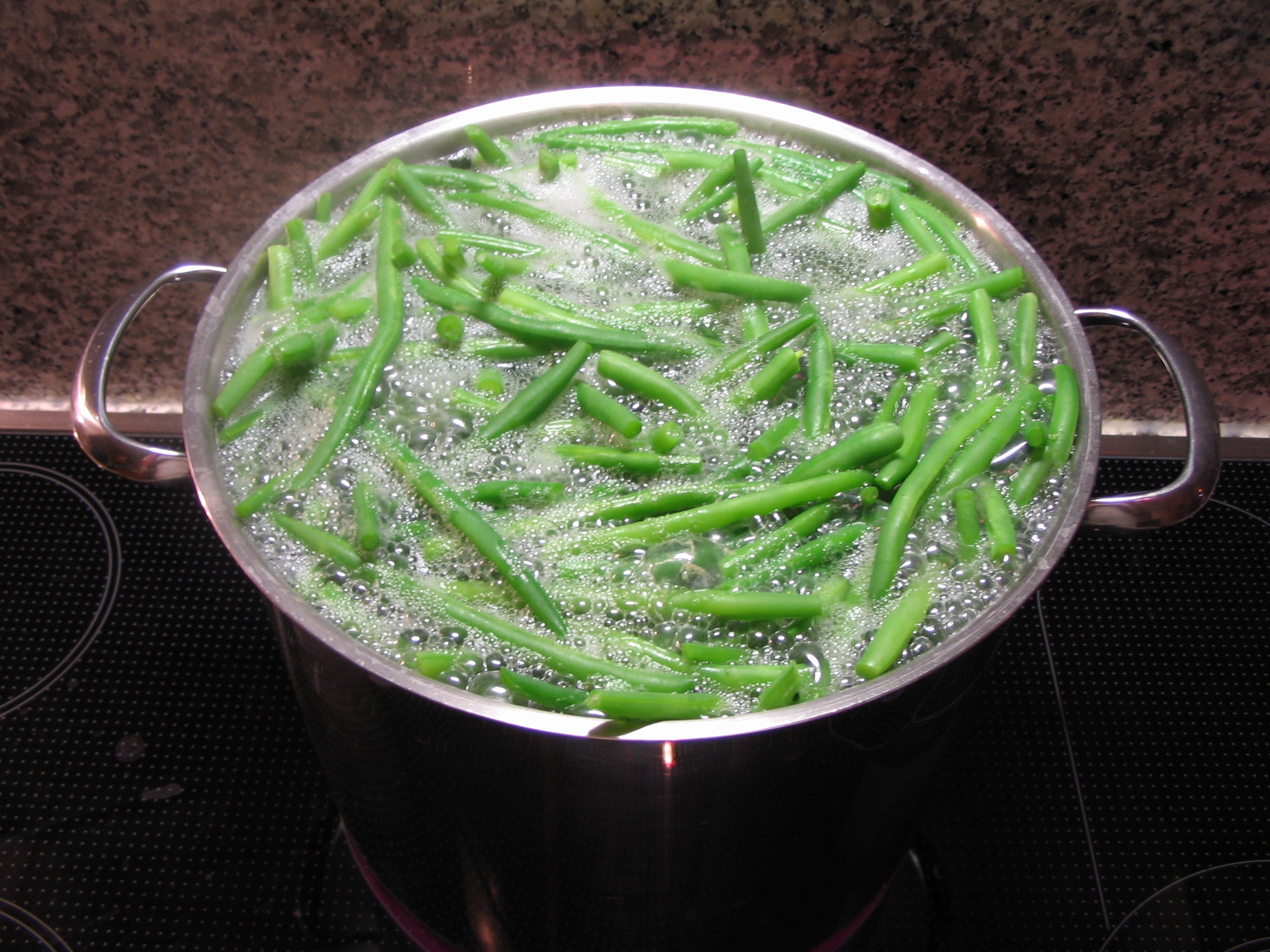|
Linamarin
Linamarin is a cyanogenic glucoside found in the leaves and roots of plants such as cassava, lima beans, and flax. It is a glucoside of acetone cyanohydrin. Upon exposure to enzymes and gut flora in the human intestine, linamarin and its methylated relative lotaustralin can decompose to the toxic chemical hydrogen cyanide; hence food uses of plants that contain significant quantities of linamarin require extensive preparation and detoxification. Ingested and absorbed linamarin is rapidly excreted in the urine and the glucoside itself does not appear to be acutely toxic. Consumption of cassava products with low levels of linamarin is widespread in the low-land tropics. Ingestion of food prepared from insufficiently processed cassava roots with high linamarin levels has been associated with dietary toxicity, particularly with the upper motor neuron disease known as konzo to the African populations in which it was first described by Trolli and later through the research network initiate ... [...More Info...] [...Related Items...] OR: [Wikipedia] [Google] [Baidu] |
Cassava
''Manihot esculenta'', common name, commonly called cassava (), manioc, or yuca (among numerous regional names), is a woody shrub of the spurge family, Euphorbiaceae, native to South America. Although a perennial plant, cassava is extensively cultivated as an annual agriculture, crop in tropical and subtropical regions for its edible starchy tuberous root, a major source of carbohydrates. Though it is often called ''yuca'' in parts of Spanish America and in the United States, it is not related to yucca, a shrub in the family Asparagaceae. Cassava is predominantly consumed in boiled form, but substantial quantities are used to extract cassava starch, called tapioca, which is used for food, animal feed, and industrial purposes. The Brazilian farinha, and the related ''garri'' of West Africa, is an edible coarse flour obtained by grating cassava roots, pressing moisture off the obtained grated pulp, and finally drying it (and roasting both in the case of farinha and garri). Cassav ... [...More Info...] [...Related Items...] OR: [Wikipedia] [Google] [Baidu] |
Cyanide
Cyanide is a naturally occurring, rapidly acting, toxic chemical that can exist in many different forms. In chemistry, a cyanide () is a chemical compound that contains a functional group. This group, known as the cyano group, consists of a carbon atom triple-bonded to a nitrogen atom. In inorganic cyanides, the cyanide group is present as the anion . Soluble salts such as sodium cyanide (NaCN) and potassium cyanide (KCN) are highly toxic. Hydrocyanic acid, also known as hydrogen cyanide, or HCN, is a highly volatile liquid that is produced on a large scale industrially. It is obtained by acidification of cyanide salts. Organic cyanides are usually called nitriles. In nitriles, the group is linked by a covalent bond to carbon. For example, in acetonitrile (), the cyanide group is bonded to methyl (). Although nitriles generally do not release cyanide ions, the cyanohydrins do and are thus rather toxic. Bonding The cyanide ion is isoelectronic with carbon monoxide a ... [...More Info...] [...Related Items...] OR: [Wikipedia] [Google] [Baidu] |
Diabetes
Diabetes, also known as diabetes mellitus, is a group of metabolic disorders characterized by a high blood sugar level ( hyperglycemia) over a prolonged period of time. Symptoms often include frequent urination, increased thirst and increased appetite. If left untreated, diabetes can cause many health complications. Acute complications can include diabetic ketoacidosis, hyperosmolar hyperglycemic state, or death. Serious long-term complications include cardiovascular disease, stroke, chronic kidney disease, foot ulcers, damage to the nerves, damage to the eyes, and cognitive impairment. Diabetes is due to either the pancreas not producing enough insulin, or the cells of the body not responding properly to the insulin produced. Insulin is a hormone which is responsible for helping glucose from food get into cells to be used for energy. There are three main types of diabetes mellitus: * Type 1 diabetes results from failure of the pancreas to produce enough insulin due to lo ... [...More Info...] [...Related Items...] OR: [Wikipedia] [Google] [Baidu] |
RNA Interference
RNA interference (RNAi) is a biological process in which RNA molecules are involved in sequence-specific suppression of gene expression by double-stranded RNA, through translational or transcriptional repression. Historically, RNAi was known by other names, including ''co-suppression'', ''post-transcriptional gene silencing'' (PTGS), and ''quelling''. The detailed study of each of these seemingly different processes elucidated that the identity of these phenomena were all actually RNAi. Andrew Fire and Craig C. Mello shared the 2006 Nobel Prize in Physiology or Medicine for their work on RNAi in the nematode worm '' Caenorhabditis elegans'', which they published in 1998. Since the discovery of RNAi and its regulatory potentials, it has become evident that RNAi has immense potential in suppression of desired genes. RNAi is now known as precise, efficient, stable and better than antisense therapy for gene suppression. Antisense RNA produced intracellularly by an expression vector m ... [...More Info...] [...Related Items...] OR: [Wikipedia] [Google] [Baidu] |
Flour
Flour is a powder made by grinding raw grains, roots, beans, nuts, or seeds. Flours are used to make many different foods. Cereal flour, particularly wheat flour, is the main ingredient of bread, which is a staple food for many cultures. Corn flour has been important in Mesoamerican cuisine since ancient times and remains a staple in the Americas. Rye flour is a constituent of bread in central and northern Europe. Cereal flour consists either of the endosperm, germ, and bran together (whole-grain flour) or of the endosperm alone (refined flour). ''Meal'' is either differentiable from flour as having slightly coarser particle size (degree of comminution) or is synonymous with flour; the word is used both ways. For example, the word '' cornmeal'' often connotes a grittier texture whereas corn flour connotes fine powder, although there is no codified dividing line. The CDC has cautioned not to eat raw flour doughs or batters. Raw flour can contain bacteria like '' E. col ... [...More Info...] [...Related Items...] OR: [Wikipedia] [Google] [Baidu] |
Fufu
Fufu (or fufuo, foofoo, foufou ) is a dough-like food found in West African cuisine. In addition to Ghana, it is also found in Sierra Leone, Guinea, Liberia, Cote D'Ivoire, Benin, Togo, Nigeria, Cameroon, the Democratic Republic of Congo, the Central African Republic, the Republic of Congo, Angola and Gabon. It is often made in the traditional Ghanaian, Ivorian, Liberian, and Cuban method of separately mixing and pounding equal portions of boiled cassava with green plantain or cocoyam, or by mixing cassava/plantains or cocoyam flour with water and stirring it on a stove. Its thickness is then adjusted to personal preference, and it is eaten with broth-like soups. Some countries, particularly the Igbo tribe in Nigeria, have a version of fufu (Akpu) made from fermented cassava dough that is eaten with thick textured stews. Other flours, such as semolina, maize flour, or mashed plantains, may take the place of cassava flour. FuFu is traditionally eaten with the fingers, and a smal ... [...More Info...] [...Related Items...] OR: [Wikipedia] [Google] [Baidu] |
Tuber
Tubers are a type of enlarged structure used as storage organs for nutrients in some plants. They are used for the plant's perennation (survival of the winter or dry months), to provide energy and nutrients for regrowth during the next growing season, and as a means of asexual reproduction. ''Stem tubers'' form thickened rhizomes (underground stems) or stolons (horizontal connections between organisms); well known species with stem tubers include the potato and yam. Some writers also treat modified lateral roots (''root tubers'') under the definition; these are found in sweet potatoes, cassava, and dahlias. Terminology The term originates from the Latin , meaning "lump, bump, swelling". Some writers define the term "tuber" to mean only structures derived from stems; others use the term for structures derived from stems or roots., p. 124 Stem tubers A stem tuber forms from thickened rhizomes or stolons. The top sides of the tuber produce shoots that grow into typical stems ... [...More Info...] [...Related Items...] OR: [Wikipedia] [Google] [Baidu] |
Garri
In West Africa, ''garri (also known as gari, galli'', or ''gali)'' is the flour of the fresh starchy cassava root. In the Hausa language, ''garri'' can also refer to the flour of guinea corn, maize, rice, yam, plantain and millet. For example, ''garin dawa'' is processed from guinea corn, ''garin masara'' and ''garin alkama'' originate from maize and wheat respectively, while ''garin magani'' is a powdery medicine. Starchy flours mixed with cold or boiled water form a major part of the diet in Nigeria, Benin, Togo, Ghana, Guinea, Cameroon and Liberia. Cassava, the root from which ''garri'' is produced, is rich in fiber, copper and magnesium. Garri is similar to farofa of Brazil, used in many food preparations and recipes, particularly in the state of Bahia. Preparation To make ''garri'' flour, cassava tubers are peeled, washed and grated or crushed to produce a mash. The mash can be mixed with palm oil and placed in a porous bag, which is then placed in an adjustab ... [...More Info...] [...Related Items...] OR: [Wikipedia] [Google] [Baidu] |
Fermentation (food)
In food processing, fermentation is the conversion of carbohydrates to alcohol or organic acids using microorganisms—yeasts or bacteria—under anaerobic (oxygen-free) conditions. Fermentation usually implies that the action of microorganisms is desired. The science of fermentation is known as zymology or zymurgy. The term "fermentation" sometimes refers specifically to the chemical conversion of sugars into ethanol, producing alcoholic drinks such as wine, beer, and cider. However, similar processes take place in the leavening of bread (CO2 produced by yeast activity), and in the preservation of sour foods with the production of lactic acid, such as in sauerkraut and yogurt. Other widely consumed fermented foods include vinegar, olives, and cheese. More localised foods prepared by fermentation may also be based on beans, grain, vegetables, fruit, honey, dairy products, and fish. History and prehistory Natural fermentation precedes human history. Since ancient times, h ... [...More Info...] [...Related Items...] OR: [Wikipedia] [Google] [Baidu] |
Boiling
Boiling is the rapid vaporization of a liquid, which occurs when a liquid is heated to its boiling point, the temperature at which the vapour pressure of the liquid is equal to the pressure exerted on the liquid by the surrounding atmosphere. There are two main types of boiling: nucleate boiling where small bubbles of vapour form at discrete points, and critical heat flux boiling where the boiling surface is heated above a certain critical temperature and a film of vapor forms on the surface. Transition boiling is an intermediate, unstable form of boiling with elements of both types. The boiling point of water is 100 °C or 212 °F but is lower with the decreased atmospheric pressure found at higher altitudes. Boiling water is used as a method of making it potable by killing microbes and viruses that may be present. The sensitivity of different micro-organisms to heat varies, but if water is held at for one minute, most micro-organisms and viruses are inactivated. Ten ... [...More Info...] [...Related Items...] OR: [Wikipedia] [Google] [Baidu] |
Blanching (cooking)
Blanching is a cooking process in which a food, usually a vegetable or fruit, is scalded in boiling water, removed after a brief, timed interval, and finally plunged into iced water or placed under cold running water (known as shocking or refreshing) to halt the cooking process. Blanching foods helps reduce quality loss over time. People often use blanching as a treatment prior to freezing, drying, or canning—heating vegetables or fruits to inactivate enzymes, modify texture, remove the peel, and wilt tissue. The inactivation of enzymes preserves color, flavor, and nutritional value. The process has three stages: preheating, blanching, and cooling. The most common blanching methods for vegetables/fruits are hot water and steam, while cooling is either done using cold water or cool air. Other benefits of blanching include removing pesticide residues and decreasing microbial load. Drawbacks to the blanching process can include leaching of water-soluble and heat sensitive nutrie ... [...More Info...] [...Related Items...] OR: [Wikipedia] [Google] [Baidu] |




.jpg)

.jpg)
.jpg)
